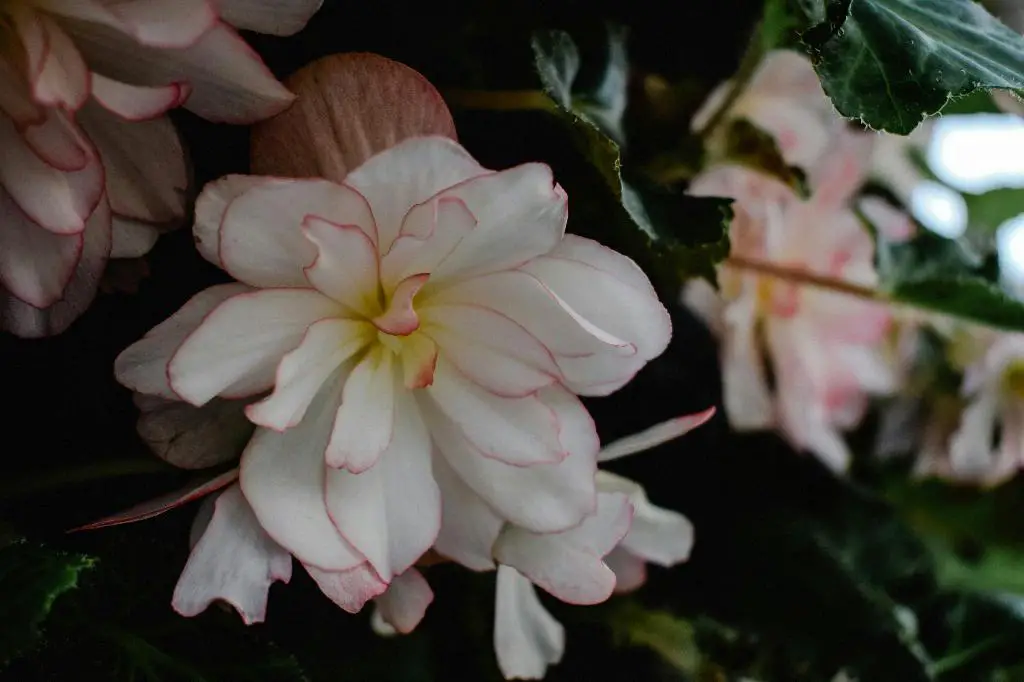Weeping begonias, known for their cascading branches and vibrant, full blooms, make for a stunning addition to any garden or indoor setting. As part of the Begoniaceae family, these plants bring not just aesthetic pleasure but also a variety of colors that can brighten any corner. Characterized by their unique growth habit, weeping begonias often spill beautifully over the edges of pots or baskets, making them ideal for hanging arrangements. Not only are they visually appealing, but they’re also relatively easy to care for, requiring some basic attention to truly thrive. With their lush foliage and floriferous displays, weeping begonias can offer something special to even the novice gardener. So, if you’re looking for that perfect blend of beauty and ease, diving into the world of weeping begonias might just be what you need.
Choosing the Perfect Spot: Where to Grow Weeping Begonias
Finding the right spot for your weeping begonias is crucial for their success. These plants thrive in bright, indirect light, so a spot near a window that filters sunlight with sheer curtains could be perfect. However, be mindful to avoid direct sunlight during the harsh midday hours as it can scorch their delicate leaves. If you’re planning to grow them outdoors, a shady to semi-shady spot under a tree or an awning can provide the ideal light conditions. Additionally, these begonias prefer environments with high humidity and well-circulated air. So, whether it’s a cozy corner of your living room or a protected area on your porch, making sure your weeping begonias are placed in the right environment will help them flourish and bring life to your space.
Planting Tips for Thriving Weeping Begonias
Starting your weeping begonias off on the right foot is key to their growth. When planting, use a well-draining potting mix specifically designed for them or similar plants. The ideal soil should be rich yet airy, allowing roots to breathe and excess water to escape, preventing root rot. When potting, be sure not to bury the stems too deeply as this could cause them to rot. A good rule of thumb is to keep the soil level just below the crown of the plant. Beyond the soil, ensure your container of choice has adequate drainage holes. If you’re looking to display your begonias in decorative pots without holes, consider potting them in a plastic container first and then placing it inside the decorative one, preventing water accumulation around the roots.
Essential Care: Watering and Feeding Your Weeping Begonias
Regular but careful watering is essential for keeping your weeping begonias healthy. They prefer the soil to be slightly moist but not waterlogged. During the growing season, watering them thoroughly once the top inch of soil feels dry usually does the trick. Reduce watering in the cooler months when plant growth naturally slows. Overwatering can be more detrimental than under watering, so when in doubt, lean toward less. As for feeding, applying a balanced, water-soluble fertilizer every couple of weeks during the growing season can support their lush foliage and vibrant blooms. Remember, a little goes a long way, so adhere to the recommended dilution rates to avoid overwhelming your plants.
Pruning and Maintenance: Keeping Weeping Begonias Beautiful
Pruning isn’t just about maintaining the shape and size of your weeping begonias; it’s also crucial for their health and flower production. Periodically pinching off the tips of the stems encourages them to become bushier and more robust. Deadheading, or removing spent flowers, will not only keep your plants looking tidy but also encourage more blooms to form. Regularly inspecting your weeping begonias for dead or dying leaves and snipping them off will also help in preventing disease spread and pest infestations. A little tidy up here and there will keep your begonias blooming beautifully and abundantly.
Common Issues and Solutions for Weeping Begonias
Despite their hardiness, weeping begonias can encounter issues like any other plant. Common concerns include powdery mildew, stem rot, and pest infestations such as aphids and spider mites. Most fungal issues can be prevented or treated with good air circulation and avoiding water on the foliage. If pests are spotted, treating the plants with an appropriate insecticidal soap can be effective. It’s always a good idea to address problems early on to prevent them from escalating. Keeping a close eye on your plants and acting quickly at the first sign of trouble can save you a lot of hassle down the line.
Weeping Begonias Through the Seasons: What to Expect
As the seasons change, so will the needs of your weeping begonias. In spring and summer, they are in their growth phase, requiring more water, light, and fertilizer. As fall approaches, you can reduce watering and stop fertilizing as the plants prepare for dormancy. Winter care is mostly about protection and minimal watering, especially for outdoor plants. They might not look as vibrant during these cooler months, but don’t worry—they’re just gearing up for another splendid display come spring. Understanding this seasonal cycle will help you cater to their needs more effectively, ensuring your weeping begonias always have what they need to succeed.
Creative Landscaping Ideas with Weeping Begonias
Weeping begonias are not just for hanging baskets—they can also enhance your landscape in various creative ways. Consider using them as ground cover in shaded garden patches where few other plants can thrive. For a dynamic garden display, mix them with other shade-loving perennials like ferns or hostas, creating a contrasting yet harmonious blend of textures and colors. If you’re into container gardening, try arranging several weeping begonias with varying bloom colors together for an eye-catching display. With a bit of creativity, weeping begonias can transform any space into a lively and colorful showcase.

